From BIG to David Chipperfield, Frank Gehry to Snøhetta: a world tour of the best buildings set to open in 2026
Daan Roosegaarde: an activist for innovation and technology
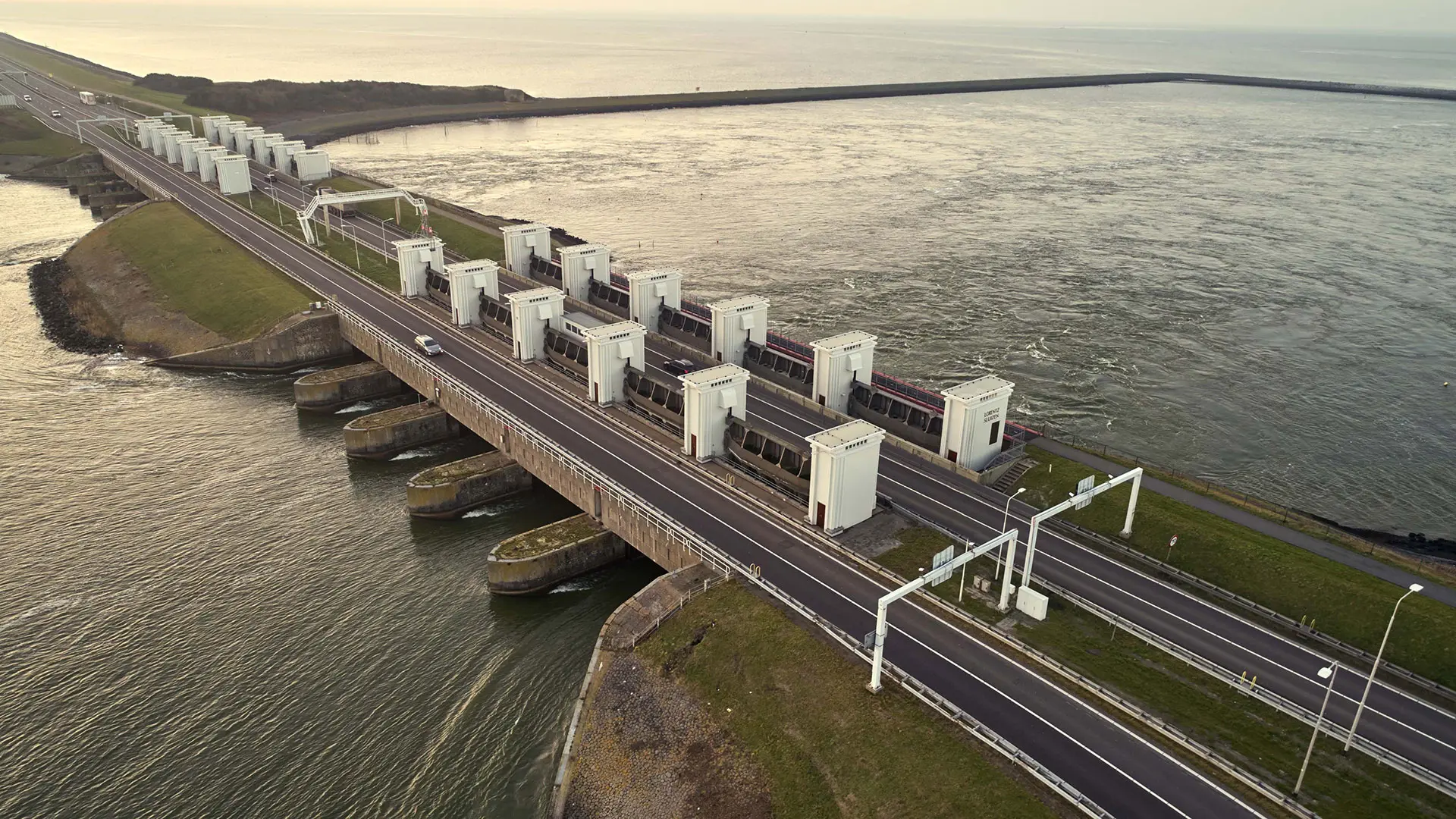
Gates of Light
“What we do know is that there’s no way back. Unless we invest in new ideas we’ll die.” With this last rallying call, one of the most powerful creative voices to talks to us about his past and, even more, about his future.
He’s one of the global leaders of the World Economic Forum, as well as a member of the NASA Innovation Team, and is hailed by Forbes and Wired magazines as a contemporary innovator. He was also Dutch Artist of the Year 2016. He holds a Masters in Architecture (from Rotterdam’s Berlage Institute), but describes himself not as an architect, but as an artist, designer, inventor and smart creative. Nonetheless, he finds it “strange that when we discuss global challenges, architects are never involved in discussions.” Born in 1979, he set up a studio in Rotterdam in 2007 and a more recent one in Shanghai, and does his own thing, with his technological art, and his bold and innovative ideas. From Urban Sun, a light that cleans public spaces of coronavirus, very recently unveiled in Rotterdam, to Grow, his homage to agriculture, which harnesses the new optical technologies, to the Smog Free Tower, in Beijing, the luminous solar-powered cycle path at Neunen, and the Gates of Light installation on Afsluitdijk Dam, lit by the headlights of passing cars, his work consists of speeding up the diffusion process of these types of social design in an attempt to save the planet: “What we know is that there’s no way back. We need to invest in new ideas to survive.” His last call. With his eye firmly fixed on the future, he subscribes to the view that technology is the driver of poetry. The success of his projects is the most immediate confirmation of this. His mantra is Schoonheid, which means both “beautiful” and “clean.”
Even as a boy I never stayed inside. I was always outside, playing with nature, building tree huts. You create to find meaning, to understand the world around you – that sort of questioning. I think it started there, but also 5-6 years ago looking outside my window in Beijing there were good days when I could see the city, bad days when it was filled with smog and I literally couldn't see the other side of the street. I wondered how I could design with pollution or I could show the beauty of clean air. I think the notion of questioning reality and trying to understand it and creating, designing it, making a connection with it, with yourself, but also with the world around you – that's the essence of design for me.
I think there will definitely come a time where we will have different values, and pandemic has shown that you can have all the money in the world, but if you're sick or can’t meet your friends, you're still not happy. I think true beauty, true luxury is not a Louis Vuitton bag or a Ferrari, but the knowledge that you have clean air, clean water or clean energy. I'm 41, even the younger generation and the brands embrace that thought, so I think it will be part of our new default, of our new standard. I also think the role of technology is really important. Right now we are feeding computer screens with our hopes, our dreams, our desires, and what do we get back in return? A “like” – that's a bad deal, so we will renegotiate our deal with the computers, with the machines, where it's not just George Orwell dominating us and we are feeding it, but more Leonardo da Vinci, where technology helps us to inform, to feed, to suggest, to explore. So, I think it's a shift of values and a shift of control.
I think what all the projects do is trigger curiosity. I think it's really important that people are curious about their art, not just scared, or numb, or mute, because the future is very interesting. If we cannot imagine it, we won’t be able to create it either. I miss that in the world of today, we’re scared, we’re mad, we’re silent, we’re waiting, but we're not curious, and I rarely hear visions of the future today – and that's quite weird. In the ‘60s and in the ‘70s we had Archigram, Superstudio, we went to the moon, we had the Jetsons as cartoons, we flew on Concorde, we were curious about the future, so I think with a project I can show the beauty of a potential sustainable future and trigger curiosity. I think that’s the main job and you're right, sometimes we do insides although even as a boy I always liked outside, always played outside, not inside, so we like inside, but I feel outside you can even relate even more with nature, with rain, with winds, with people who don't expect it, so we love public spaces.
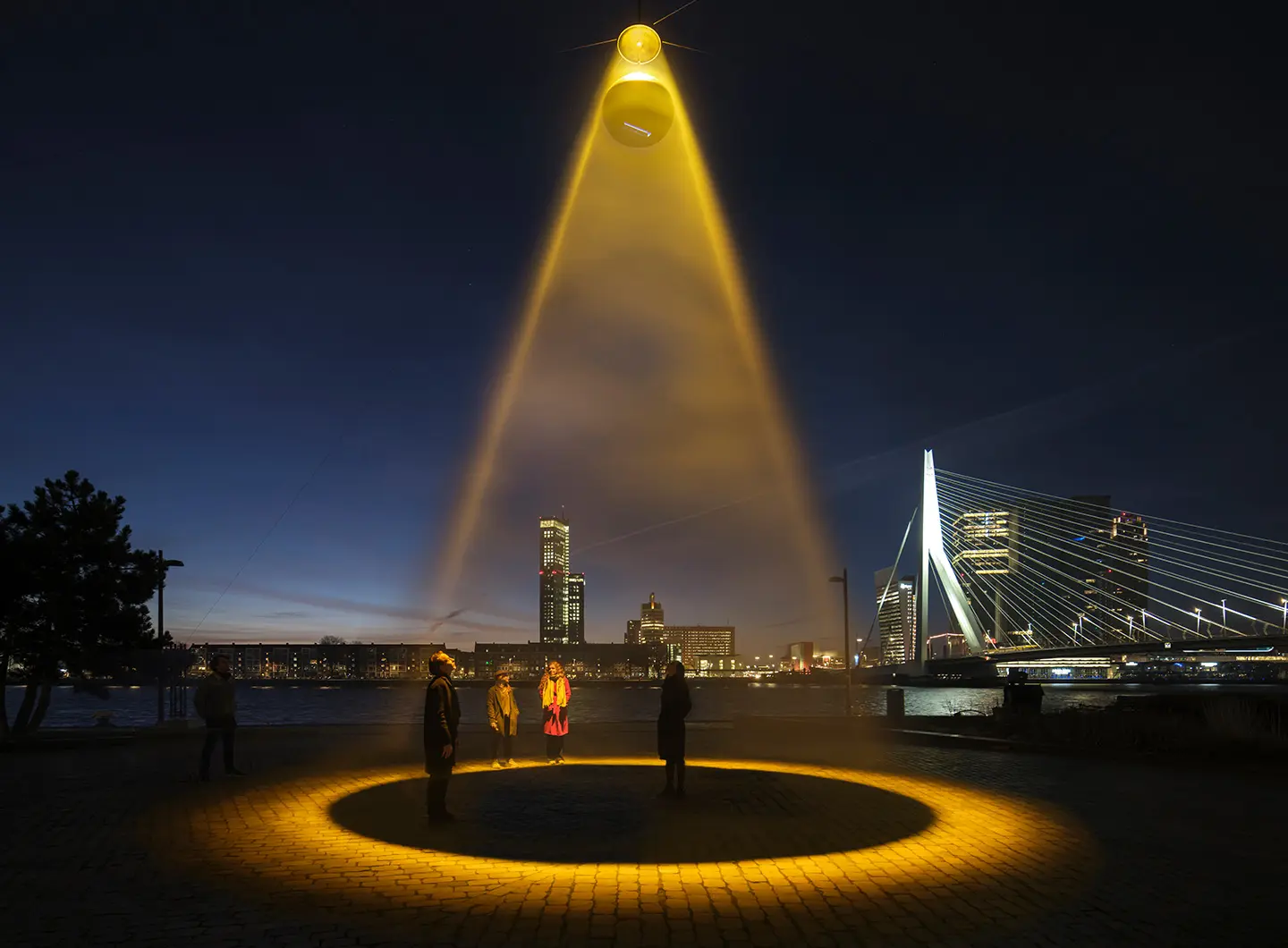
Urban Sun
I've always been a bit surprised that the design community is so focused on objects rather than experiences and atmospheres. It comes of course from the industry, but with all due respect I think that design has become so much more and the Salone del Mobile is also changing that. We once designed a chair, which was based on an experience I have had many times when you do an innovation and there are always very positive people, and like you they are fans, believers, but there is also a small group which says is it possible, is it allowed? What are the two most common words people use when you present new ideas? How do they start their sentence? “Yes, but…” – we designed the “Yes But” chair, it’s a normal chair by Friso Kramer, a Dutch designer, but we upgraded it, we put a little voice recognition underneath it and the moment you sit on that chair and you say those two horrible destructive words, you get a short but pretty intense little shock on the backside. There’s a Chinese and English version, we're working on the Italian. I think that’s the only chair we’ve designed. It is important that we move away from the yes but to the what now. I'm a bit sad that, for good reasons, the Salone had to postpone, because I think maybe what we should do today is say “OK boys and girls, design community, we have a design challenge and it's called COVID-19.” Let's use the experience, the ideas, the connection with industry, with science to make something, to design our new normal, to come up with proposals and do an exhibition about that or, even better, implement those ideas, so we have safer or better public gatherings. I think it's weird that design communities have been silent about that, our future is defined by virus experts, by governments, billions of euros are being spent, my students say our future is frozen and silent, it’s mute, but it's a design challenge. We need to live with the virus, we need to renegotiate and redesign our relationship with the landscape, with each other, so I think the design community can definitely be more proactive and take a role in what we want our futures to look like. Can I be honest and say I miss that a bit right now? I think it will be really interesting at the Salone. We don't have an answer for everything but we have proposals, like Urban Sun that we’ve launched.
We’d like to bring Urban Sun to Milano, to the Salone, but I would also see it as a platform, as a call to action to ask other designers what their ideas are around finding a new harmony to design our new normal, and I think that will be a fascinating exhibition, people are so eager, there's such a hunger for something different. Our phone’s been ringing nonstop, since we launched it, so let's design our new normal. Urban Sun shines a large circle of this far-UVC light into public spaces, cleaning those spaces of the coronavirus. It acts as an additional layer of protection to current government rules. Urban Sun aims to inspire hope.
That's why we spend a lot of time on research, on science and have it backed up. The Urban Sun’s far-UVC light source is measured and calibrated by the Dutch National Metrology Institute VSL. Urban Sun meets the International Commission on Non-Ionizing Radiation Protection (ICNIRP) safety standards and is supported by the Dutch President of the Council of the Public Health & Society Board. So you really have a body of people saying this is a good idea, not just a stunt, what's new is super sensitive right, it's a sensitive topic and so we were also wondering why we were doing this – I'm spending my own time and money – we could just not do it and wait, but it was in my head – I just needed to get it out but I'm glad I did.
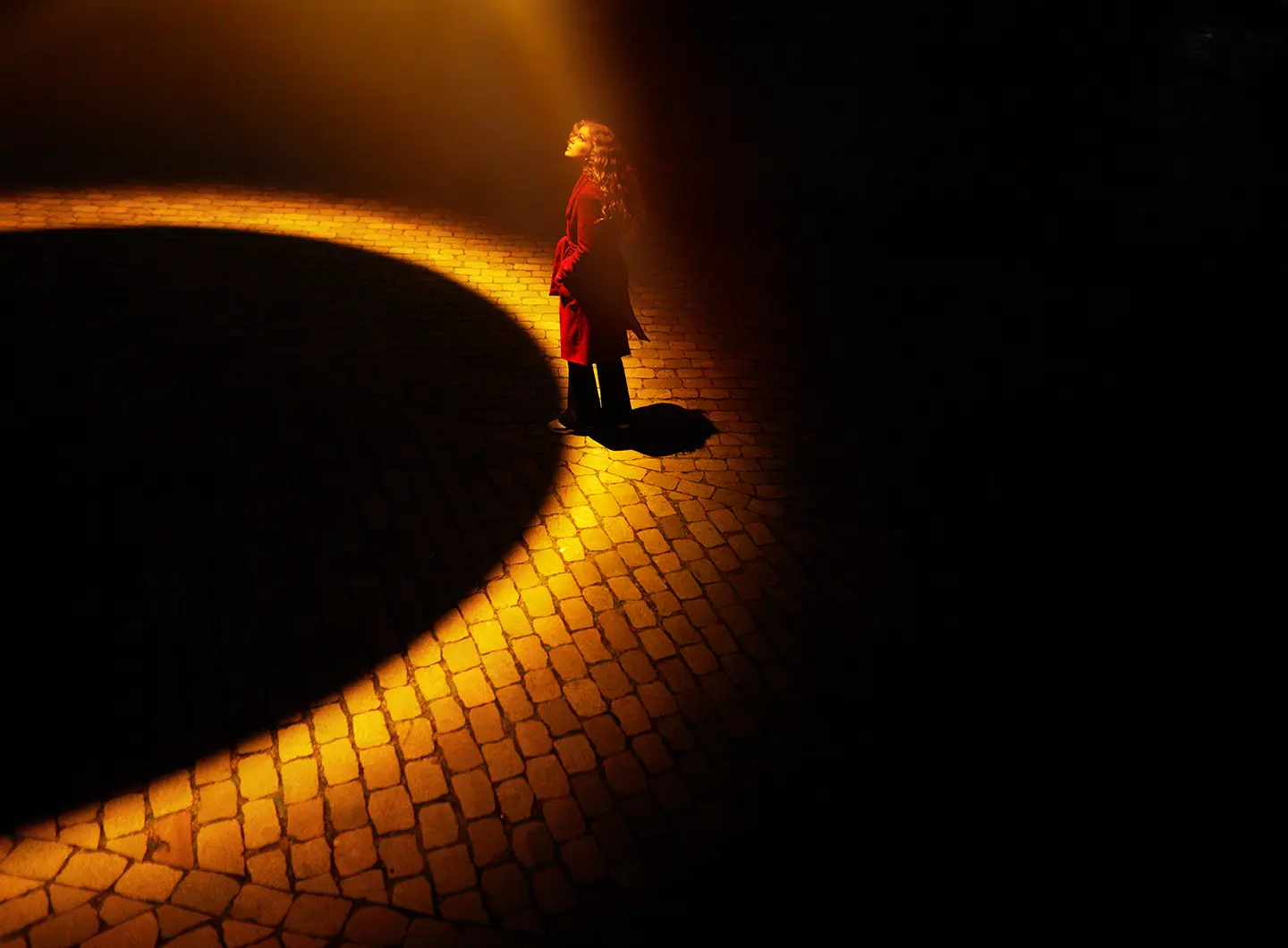
Urban Sun
We don't know what the future will look like, you don't know, I don't know, we don't know, nobody knows, but we do know one thing: if we don't invest enough in new ideas we die, we drown. That's protopia, prototype step by step, learning, improving, failing. Utopia’s something fixed and like a rainbow in the sky, we will never ever reach it, and utopia has failed many times: Biosphere, Arcosanti, Archigram, Frank Lloyd Wright, Superstudio, and that was great and they had their instruments, but I think it needs to be more practical today. We are aware, there's enough symbolism and activation but we need real solutions and real action, time is running out, the world is on fire, so protopia is about that, about saying OK we don't know how or what or where, but we're trying and we’re pushing, we're learning, we're feeling our way step by step. Protopia is a phrase coined by Kevin Kelly who was the co-founder of Wired magazine many years ago, almost 20-25 years ago, but it always resonated with me, so I started using it and also it’s very open, Utopia is closed – you can observe and that’s it. Protopia is open, it’s collaboration, it’s clean form, so I think that’s the new way. For Urban Sun I had more than 320 Zoom calls with scientists and experts all around the world. It's really about learning and collaborating.
It’s like you have a flavour in your mouth, you don't know the ingredients, you start cooking and in the end you get a one Michelin star dessert and it becomes shareable, so you're driven by ideas, you're driven by curiosity and a naive notion that by creating, by designing things you can improve life. That's sort of the common thread, but every time it's different. It’s a different conversation, a different context, a different client, a different obsession. So, you have a very strong focus, a very strong point on the horizon, a ‘wanting to improve the world’ focus, but to get there you have to be very flexible and adaptive. And in the end, it sort of makes sense.
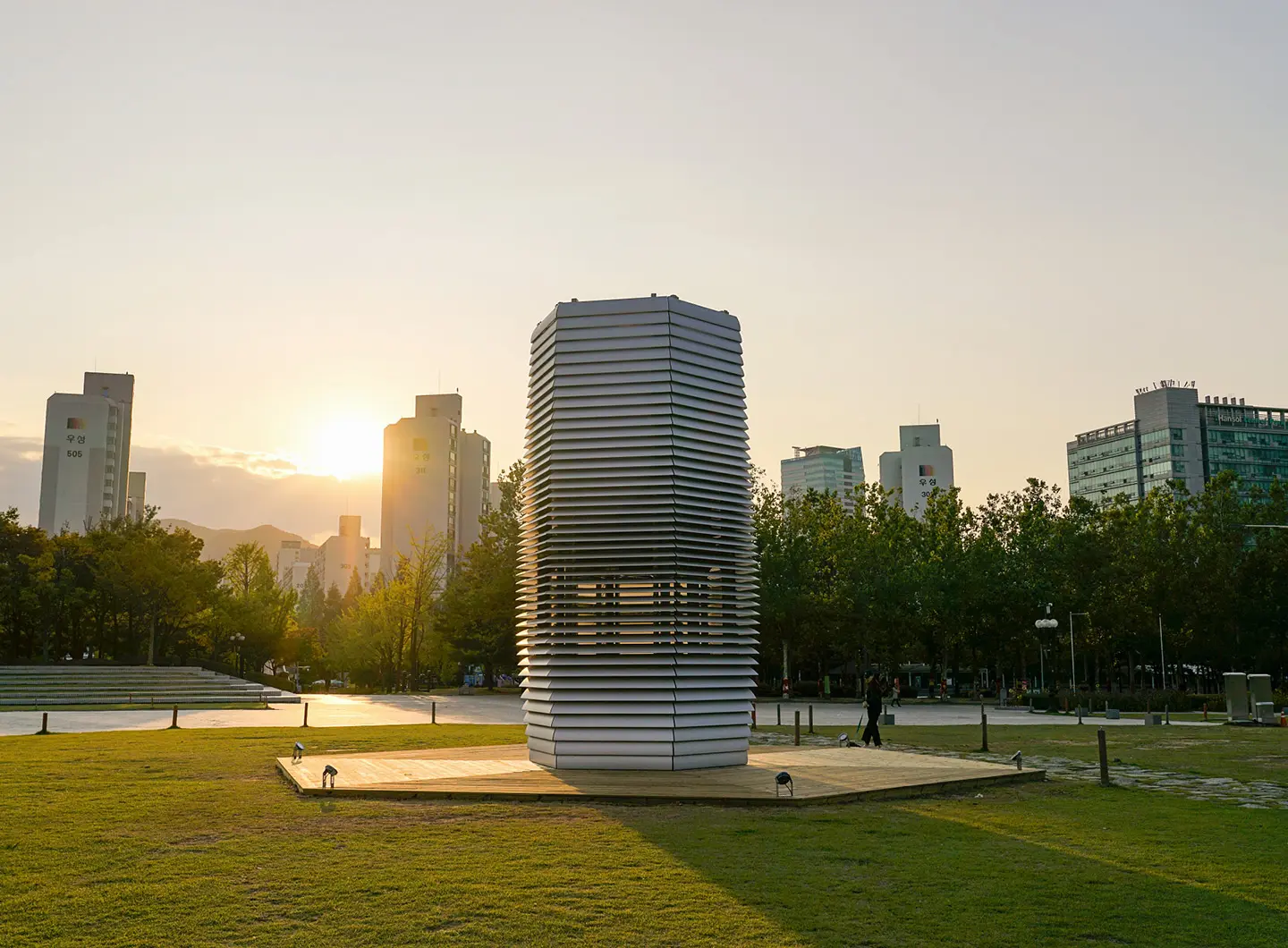
Smog Free Tower
If you discount all those things it's just four hours of sleep, and I thank them, I have my little moments where I go night diving in in Asia. I love that because there are light-emitting plankton. You are in a world where you are not in control, you’re out of control. I love being there because I like control, every designer is a sort of control freak, but it's great to not be in control, so I love diving. A lot of things in my life are driven by inspiration but also by frustration – you look at the world and you don't get it, you don't understand it, you’re confused, wondering why we are doing it like this, so there's a small piece of Daan which is not work-related, but most of the time it's just spending an incredible amount of time, love and energy on making these kind of projects happen. It is a little bit of a full package, not a lot of social life, no Cava wine in the garden every night but, who knows, maybe I will learn one day.
I think the role of design and creativity is our true capital for the future, as machines are taking over a lot of human skills – production, the taxi driver, and the garbage collection – so I think it’s also very important to mention that creative thinking and creativity is our true capital, and designers are really good at that, so I think we have a very good future-proof occupation, discipline, but let's do more!
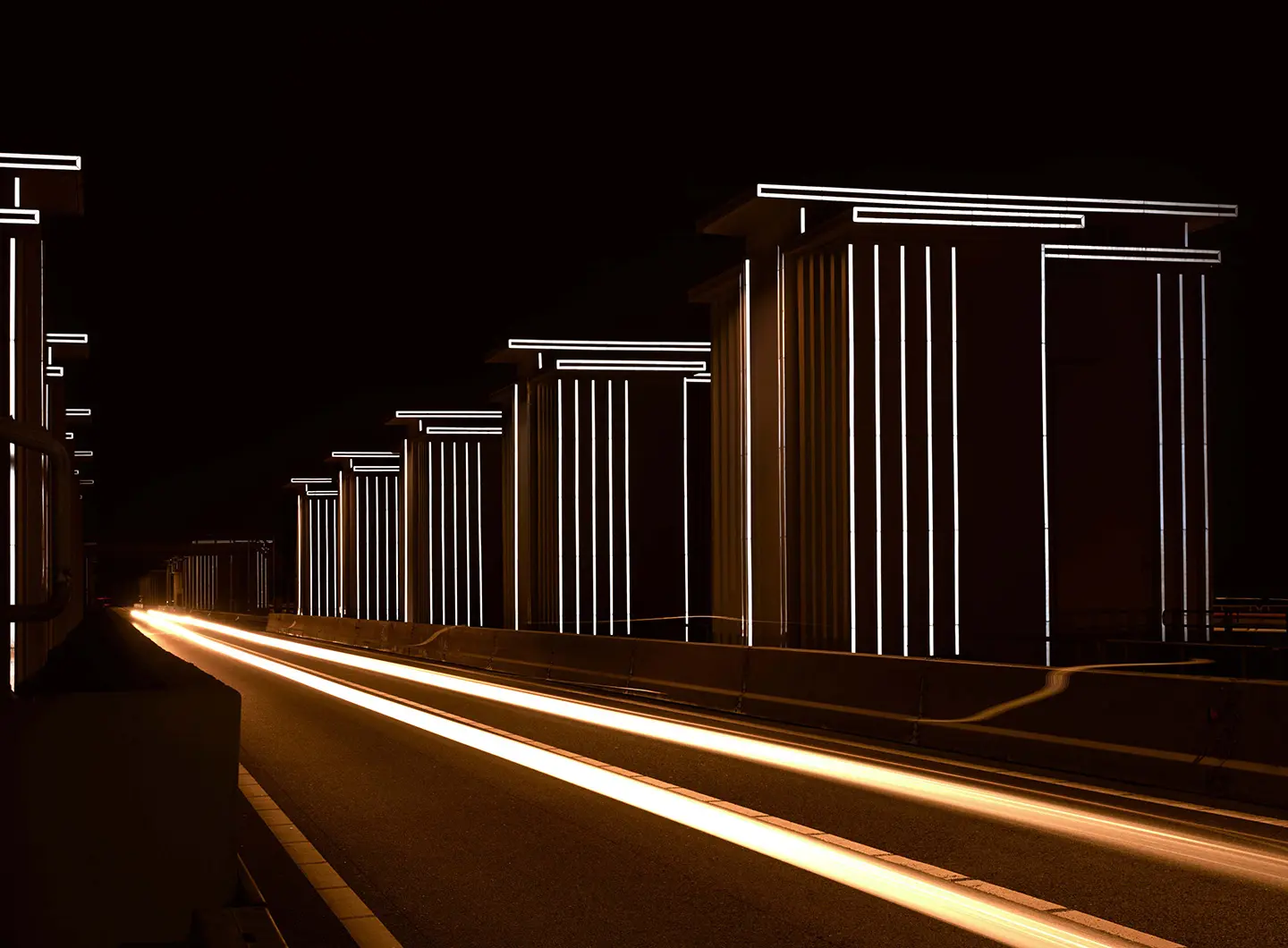
Gates of Light


 Stories
Stories








